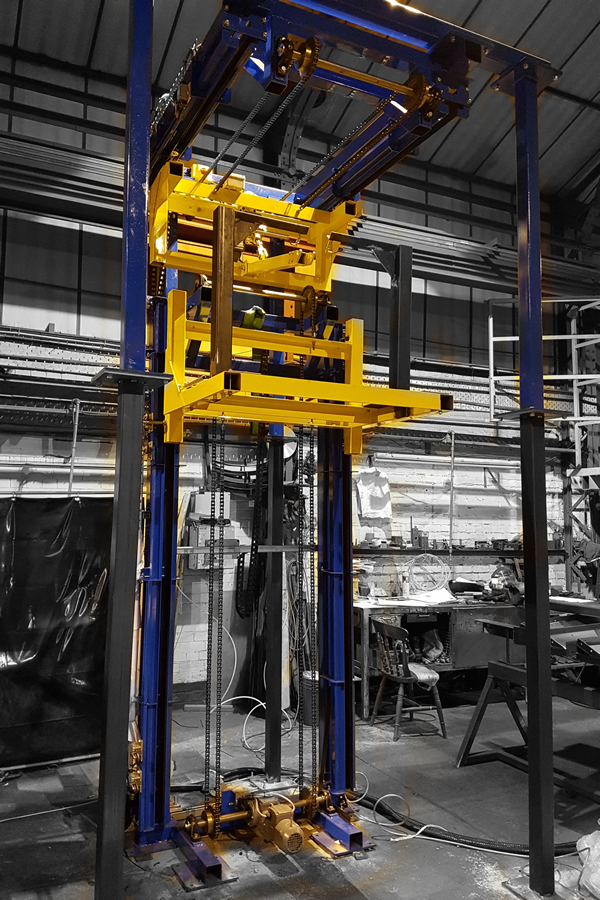Budget Friendly Lift Repair Near Me: Specialist Technicians at Your Solution
Budget Friendly Lift Repair Near Me: Specialist Technicians at Your Solution
Blog Article
Looking Into the Globe of Elevators: Common Issues Dealt With by Different Lift Mechanisms
As we navigate via the upright transportation systems of modern buildings, elevators stand out as an indispensable element of our day-to-day lives. From hydraulic elevators to grip systems and machine-room-less designs, each lift type comes with its set of common problems.
Hydraulic Lifts
Hydraulic lifts, commonly preferred for low-rise buildings, make use of fluid stress to control the movement of the elevator vehicle (lift repair companies). This mechanism includes a hydraulic pump pressing oil right into a cylinder, triggering the lift to relocate in the wanted direction. While hydraulic elevators are understood for their silent and smooth operation, they do come with their own collection of common problems
One prevalent trouble with hydraulic elevators is oil leakage. The seals in the hydraulic system can break with time, leading to oil seepage. If left unaddressed, this not just produces a mess but can likewise influence the elevator's performance. Furthermore, concerns with the control system, such as faulty shutoffs or a malfunctioning pump, can trigger disturbances in the lift's movement.
Regular upkeep and prompt repairs are vital to ensure the smooth performance of hydraulic elevators. By attending to these usual concerns proactively, building owners can minimize downtime and guarantee the security and efficiency of their vertical transport system.
Grip Elevators
When thinking about vertical transportation systems in structures, one more typical kind apart from hydraulic lifts is the grip elevator. Traction elevators operate using a system of ropes and counterweights that move the lift car by grasping onto the hoist ropes. This mechanism enables for smoother and faster upright transportation contrasted to hydraulic systems.
One of the usual concerns encountered by grip elevators is rope wear. The continuous movement of the ropes within the traction system can result in wear and tear gradually, potentially triggering the lift to breakdown or become hazardous for use. Normal examinations and upkeep of the ropes are crucial to guarantee the lift's appropriate functioning and safety.
Another concern that grip elevators may experience is connected to the control system. Issues with the control system can result in issues such as irregular activity, delays in feedback times, and even full shutdowns. Regular screening and upkeep of the control system are vital to avoid such problems and ensure the lift's dependability.
Machine-Room-Less (MRL) Lifts

One of the key parts of MRL elevators is the portable gearless traction machine that is installed within the hoistway. This equipment effectively drives the elevator automobile without the need for bulky equipment located in conventional traction elevators. In addition, MRL elevators normally make use of a weight system to balance the automobile, further enhancing their energy efficiency.
Despite their benefits, MRL elevators might deal with obstacles associated to repair and maintenance as a result of the constrained room for devices setup. Availability for servicing parts within the shaft can be restricted, requiring specialized training for technicians. Appropriate upkeep schedules and routine assessments are important to guarantee the continued smooth operation of MRL lifts.
Overloading and Weight Limit Issues
Overwhelming and weight restriction concerns are vital worries in lift operations. Lift producers design lifts with specific weight capabilities to make certain passenger safety and equipment longevity.
When elevators are strained, it puts excessive strain on the motor, cable televisions, and other components, potentially creating breakdowns or malfunctions. Security systems such as sensing units and overload sensing units remain in area to stop elevators from relocating if they discover excess weight. my link Furthermore, surpassing weight limitations can result in enhanced power intake and wear and tear on the elevator system.
To mitigate straining issues, developing managers ought to prominently display weight limitations in lifts and enlighten owners on the significance of sticking to these constraints - lift repair companies. Regular upkeep checks by qualified service technicians can additionally aid ensure that elevators are running within risk-free weight parameters. By addressing overloading and weight restriction issues proactively, building proprietors can improve elevator security and effectiveness
Electrical System Failures
Going beyond weight restrictions in lifts can not only lead to mechanical problems yet likewise possibly contribute to electric system failings within the lift infrastructure. Electrical system failings are a crucial issue in lift procedure, as they can cause unforeseen shutdowns, malfunctions, or also safety threats.
Regular maintenance and assessments are critical to identify and attend to possible electrical issues immediately, guaranteeing the secure and effective operation of elevator systems. By sticking to weight limitations and conducting routine electric system checks, building owners can alleviate the risk of electric failures in elevators.
Verdict

Hydraulic lifts, frequently preferred for low-rise buildings, utilize fluid pressure to control the movement of the elevator car.When thinking about vertical transport systems in buildings, another common type apart from hydraulic elevators is the grip lift. Grip lifts operate using a system of ropes and weights that relocate the lift cars and truck by clutching onto the hoist ropes. Unlike conventional lifts that require a separate machine space to house the tools, MRL elevators incorporate most of the elements within the shaft, eliminating the demand for a dedicated machine space.In verdict, lifts face common issues such More hints as hydraulic malfunctions, straight from the source grip system failures, and electric system issues.
Report this page